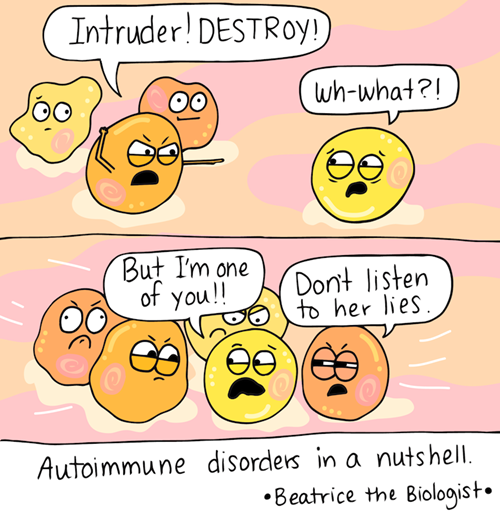The pathogenesis of multiple sclerosis (MS) lays its base on an self-directed attack of the immune system that goes haywire, as it attacks neuron myelin sheets and destroys them. This lack of capacity of the immune system of discriminating self antigens from microbial structures, which in turn unleashes auto-immunity, seems to be based on several factors, including the inheritance of particular HLA genes (HLA-DR15 is responsible, alone, for 60% of the genetic risk in MS), which govern T cell expansion, as well as a tendency of T and B cells to replicate independently of specific and direct antigen exposure. Among other things, an important pathogenetic event seems to be represented by the ability of T and B cells to engage in a HLA-TCR synapse that leads to autoproliferation of both lineages and eventually to IFN-gamma-dependent signals that, in turn, trigger macrophage-dependent myelin damage. In light of this, B and T cell proliferation, represents a central topic of interest in undestanding MS pathogenesis.
In a paper, recently published by Jelcic et al and summarised in this new – written on Nature website by Richard M. Ransohoff – suggested that this lymphocyte-lymphocyte synapse might be profoundly involved in MS-associated autoimmunity, with B-cell proliferation being a pivotal trigger in inducing the T cell auto-proliferation that promote the autoimmune attack. Consistently with this hypothesis, T and B cells from patients that were receiving drugs that enhance naive B and T cell numbers in the bloodstream (e.g. Natalizumab) underwent potent in vitro auto-proliferation, while this phoenomenon was reduced in subjects receiving Rituximab (which lowers B cell numbers in the blood). The role of T cell proliferation in MS pathogenesis was also furtherly assessed: in an elegant series of experiments, the authors demonstrated that peripheral T cell clones that were more prone to undergo in vitro auto-proliferation belonged to the same lineages that were found in post-mortem brain tissues of the same patient.

